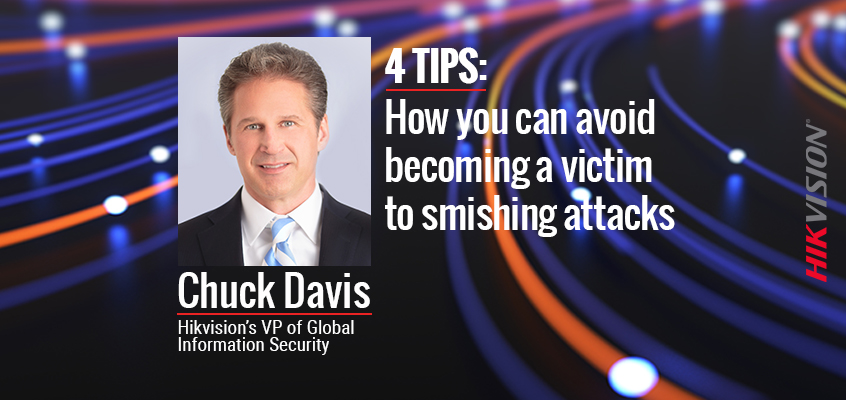4 Tips to Help You Prevent Becoming a Victim to Smishing Scams

Hikvision is dedicated to keeping you safe from cyberattacks. In today’s blog, we will be discussing smishing—an SMS-based scam using text messages to target vulnerable parties. Chuck Davis, Hikvision’s VP of Global Information Security, provides useful information regarding the matter, and tips on how you can avoid becoming a victim to smishing attacks.
While smishing is nothing new, the increase of attacks targeted at mobile devices continue to be an issue. They don’t only appear as an SMS text message, either. These cyberattacks can come as any form of text or chat messaging, such as Facebook Messenger, WhatsApp, GroupMe, Discord, or any other text-based mobile application or service.
A recent article about home delivery scams involving smishing covers how one can be victimized. These cyberattacks arrive as a text message saying a package was attempted to be delivered while nobody was available. A link to reschedule the delivery is included, directing you to a page that looks almost exactly like the valid website. Once you are in, you are asked for your tracking number, billing details to confirm your package, and banking or credit card information to pay for a “redelivery charge.”
By entering your details, you lose your personal details to scammers that will either use the information for themselves or sell to the highest bidder. Even though it can sometimes be difficult to distinguish smishing versus the real deal, there are some steps that you can take.
Below are some of Davis’ tips to identify and protect yourself from smishing:
- Don’t respond to messages from phone numbers or accounts you are not familiar with.
- Check the phone number or code that sent the message. If it’s not familiar, look it up online to see if there are other reports of spam or smishing coming from that number.
- If you’re not expecting a message, be very cautious. If you place an order for food delivery and are instantly sent a text message with a link to check the status, it’s likely safe. If you receive a similar text message and did not place an order, be very cautious and log into the app or website directly to verify the order.
- If you’ve become the target of a smishing attack, block the number immediately. iPhone and Android users both have access to built-in spam-blocking tools that should help cut down on the number of fake messages.
For more information, visit our cybersecurity webpage.
